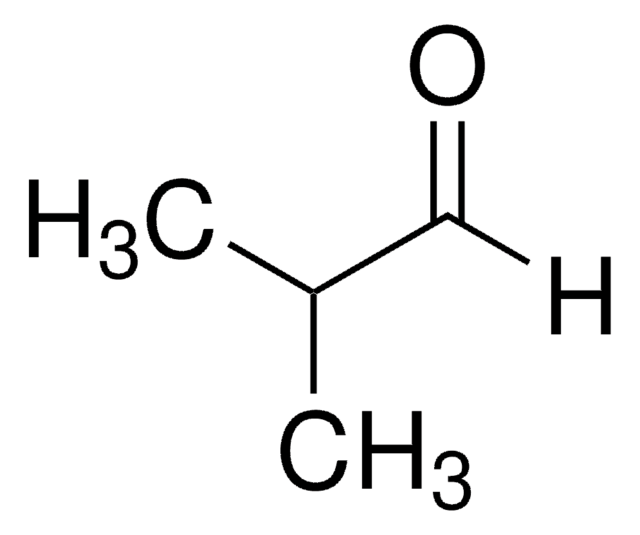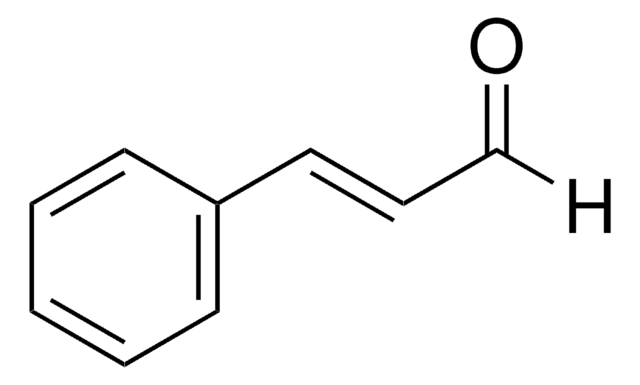W332615
Acetone
natural, ≥97%
About This Item
Prodotti consigliati
Grado
natural
Conformità normativa
FDA 21 CFR 117
Densità del vapore
2 (vs air)
Tensione di vapore
184 mmHg ( 20 °C)
Saggio
≥97%
Forma fisica
liquid
Limite di esplosione
13.2 %
Caratteristiche più verdi
Less Hazardous Chemical Syntheses
Use of Renewable Feedstocks
Learn more about the Principles of Green Chemistry.
sustainability
Greener Alternative Product
Colore
clear colorless
Indice di rifrazione
n20/D 1.359 (lit.)
P. eboll.
56 °C/760 mmHg (lit.)
Punto di fusione
−94 °C (lit.)
Densità
0.791 g/mL at 25 °C (lit.)
applicazioni
flavors and fragrances
Documentazione
see Safety & Documentation for available documents
Allergene alimentare
no known allergens
Formato
neat
Categoria alternativa più verde
, Aligned
Organolettico
apple; ethereal
Stringa SMILE
CC(C)=O
InChI
1S/C3H6O/c1-3(2)4/h1-2H3
CSCPPACGZOOCGX-UHFFFAOYSA-N
Cerchi prodotti simili? Visita Guida al confronto tra prodotti
Descrizione generale
Applicazioni
Esclusione di responsabilità
Avvertenze
Danger
Indicazioni di pericolo
Consigli di prudenza
Classi di pericolo
Eye Irrit. 2 - Flam. Liq. 2 - STOT SE 3
Organi bersaglio
Central nervous system
Rischi supp
Codice della classe di stoccaggio
3 - Flammable liquids
Classe di pericolosità dell'acqua (WGK)
WGK 1
Punto d’infiammabilità (°F)
1.4 °F - closed cup
Punto d’infiammabilità (°C)
-17.0 °C - closed cup
Dispositivi di protezione individuale
Eyeshields, Faceshields, Gloves
Scegli una delle versioni più recenti:
Possiedi già questo prodotto?
I documenti relativi ai prodotti acquistati recentemente sono disponibili nell’Archivio dei documenti.
I clienti hanno visto anche
Il team dei nostri ricercatori vanta grande esperienza in tutte le aree della ricerca quali Life Science, scienza dei materiali, sintesi chimica, cromatografia, discipline analitiche, ecc..
Contatta l'Assistenza Tecnica.




